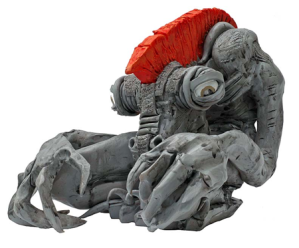Dyspraxia is a disorder that affects motor skill development. Estimates indicate that it affects up to ten percent of the population, and up to two percent severely, but despite its prevalence, dyspraxia remains relatively unknown by most people (even though actor Daniel Radcliffe has publicly discussed his dyspraxia). A little about the disorder:
- Dyspraxia is also known as Developmental Coordination Disorder (DCD), Motor Learning Difficulties, or Perceptuo-Motor Dysfunction.
- Dyspraxia is a disorder that affects motor skill development and people with the disorder have trouble planning and completing fine motor tasks, such as controlling a pen or pencil, tying shoelaces, or using utensils when eating.
- Symptoms can affect people differently at different stages and severity varies from person to person.
- Although dyspraxia is not a learning disability (LD), features of dyspraxia are often seen in those who struggle with learning disabilities such as dyslexia, dyscalculia, attention-deficit/hyperactivity disorder (ADHD), and other conditions that impact learning.
- There is no cure for dyspraxia. However, identifying the disorder early on can help tremendously. Depending on how severe the case is, work with occupational, speech and physical therapists can improve a person’s ability to function and live independently.
Jin, the main character in the middle grade novel The Monster in the Mudball, has dyspraxia (or, as he calls it, “clumsy child syndrome”). Author S.P. Gates was inspired to create a dyspraxic hero because her own son, Alex, is dyspraxic. We asked her to share her insight about dyspraxia and her son’s experience growing up dyspraxic:
 S. P. Gates: I think my experience with Alex was the same as many parents of dyspraxic children. When a little kid puts their shoes on the wrong feet and can’t tie the laces, it’s cute. But when they get to seven and eight and still can’t do those things alarm bells start ringing. I knew there was SOMETHING wrong with Alex but I didn’t know what (I’d never heard of dyspraxia). It was only when I pushed the school to have him formally assessed and he was diagnosed dyspraxic and we’d done some research that everything made sense.We finally knew why he insisted on going to bed in his day clothes. So he could leap out of bed already dressed and not waste time trying to do up buttons or put his clothes on the right way round! We understood why he ate with his fingers (because he couldn’t handle a knife and fork). Why his legs got tangled up like Big Bird’s when he tried to run. And why, when he tried to put a glass of milk on the table he would miss the table (because of his lack of spatial awareness) and the milk would spill all over the floor.
S. P. Gates: I think my experience with Alex was the same as many parents of dyspraxic children. When a little kid puts their shoes on the wrong feet and can’t tie the laces, it’s cute. But when they get to seven and eight and still can’t do those things alarm bells start ringing. I knew there was SOMETHING wrong with Alex but I didn’t know what (I’d never heard of dyspraxia). It was only when I pushed the school to have him formally assessed and he was diagnosed dyspraxic and we’d done some research that everything made sense.We finally knew why he insisted on going to bed in his day clothes. So he could leap out of bed already dressed and not waste time trying to do up buttons or put his clothes on the right way round! We understood why he ate with his fingers (because he couldn’t handle a knife and fork). Why his legs got tangled up like Big Bird’s when he tried to run. And why, when he tried to put a glass of milk on the table he would miss the table (because of his lack of spatial awareness) and the milk would spill all over the floor.
Recently the school Alex was at twenty years ago was painted and they found nine pairs of Alex’s indoor shoes stuffed behind a pipe (his name was written in them). What he’d done was hidden them but pretended he’d lost them because, being dyspraxic, he didn’t know right from left and was laughed at by other kids for getting his shoes on the wrong feet. So, because his indoor shoes were “lost” (with astonishing frequency!) he didn’t have to keep changing from outdoor to indoor shoes every play time and risking ridicule, but was allowed to keep his outdoor shoes on all day! He had loads of amazing little strategies like that.
There are other distressing symptoms of dyspraxia and I’m not going to pretend that Alex’s growing up wasn’t often a rocky road. The hoops the education system makes kids jump through (exams, written homework, sports etc.) seem specially calculated to make dyspraxic kids fail over and over again. But despite all the obstacles along the way, what a terrific and inspiring adult he’s turned out to be! As well as taking things away from him, such as the ability to play any sport involving catching or kicking a ball, dyspraxia has given him strengths. He has an amazing memory – he had to develop it when he couldn’t write down what the teacher said in class fast enough. He has a wonderful empathy with people and especially those who find life a struggle. He’s now teaching in a special school for disturbed children (some as young as six) who have been expelled from mainstream education. He has a unique imagination and a quirky mind that thinks outside the box, probably from years of thinking up innovative coping strategies for his dyspraxia.
But most of all he has one big passion – his art. Alex ended up getting a degree in Animation and Illustration. When his gross motor skills and spatial awareness are so poor, how can he do such precise, detailed and finely controlled drawings? Maybe some dyspraxia expert can explain that. Because to me, it still seems like a miracle.
For more information on dyspraxia, visit the National Center for Learning Disabilities website.
More by S.P. Gates: What Does a Monster Look Like? (including art by Alex, S.P Gates son)











